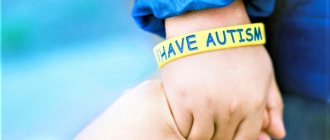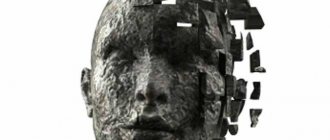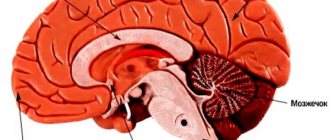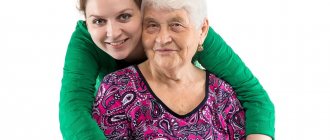Excessive moodiness of a child is the first sign of the development of neuroses. Symptoms of neuroses in children can manifest themselves as unexplained abdominal pain, headaches or rapid heartbeat. Every parent should have knowledge about the existence of this group of diseases, since inappropriate behavior in the case of neurosis in a child can only aggravate the problem. Some of the symptoms of neurotic disorders in children are the same as in adults. Others are certainly typical only for the younger age group. If neurosis is detected in a child, symptoms and treatment should be identified and carried out only by a specialist with good experience.
According to statistics, neurosis affects every fifth child, but the prevalence of anxiety disorders varies depending on age. Today, the concept of “neurosis,” which has been used in medicine since the 18th century, is used less and less. Various problems of this group of psychiatric diseases, due to the dominant symptoms among them, are more often defined as anxiety disorders.
Neurosis - what is it?
The main reason for neglecting this group of diseases is considered to be a lack of understanding of their essence and seriousness. It is important for parents to thoroughly study neurosis - what it is in medicine, for what reasons it occurs and how to deal with it. Experts define this pathology as a disorder caused by a person’s reaction to sudden, acute or prolonged psychological trauma. The disease cannot occur before the age of 3 years; it is diagnosed mainly in preschoolers and adolescents. The level of mental development of children is too primitive for personal reactions.
Causes
As for the social reasons contributing to the development of neurosis, these include the following factors:
- excessive or insufficient communication with the child;
- lack of desire by adults to find common ground with the child’s psyche;
- pathology of the nervous system in the child’s loved ones or situations that negatively affect his psyche;
- inconsistency of parenting principles between the child’s adult environment;
- life in a metropolis;
- inadequate rest;
- unsatisfactory living conditions;
- absence of one of the parents;
- parents' workload;
- transfer of the baby to third parties.
The reason for the formation of neurosis in adolescents is often the desire for superiority.
It should be noted that there are 2 periods in a child’s development when the child’s psyche is most susceptible and vulnerable.
The first period is the age of the child 2-3 years. At this time, a psychological confrontation occurs between children and their parents. During this period, the baby seeks and defends his place in the world.
The second period, favorable for the development of neurosis, begins at the age of five and lasts until the child is 7 years old. It is characterized by a more acute reaction to traumatic factors and a lack of adequate control over the response to external influences.
Neurosis - types and causes
This group of pathologies is provoked by various factors depending on the form of mental disorders. Types of neuroses in children:
- obsessive states;
- hysteria;
- depressive episodes;
- neurasthenia;
- hypochondria;
- logoneurosis;
- somnambulism;
- anorexia.
Obsessive-compulsive disorder in children
Another name for this type of disorder is obsessive-compulsive disorder (OCD). It includes neurosis of obsessive movements in children, disturbing ideas and thoughts. The presented disease is considered multifactorial. OCD can be caused by several reasons:
- genetic predisposition;
- infections (measles, mononucleosis, hepatitis);
- acute psychological trauma;
- unreasonable fears.
Phobias are often the impetus for the development of obsessive-compulsive disorder. At first, the baby cannot get rid of frightening thoughts or fantasies (obsessions) for a long time. Gradually, his brain adapts to them, developing a strange defense mechanism - obsessive actions (compulsions). The child has to perform some mandatory rituals so that his fears do not materialize, for example, jumping 5 times before entering an elevator or a dark room, washing his hands three times after communicating with a stranger, and others.
In most cases, it is difficult to suspect this neurosis in children in the early stages - the symptoms can remain hidden for a long time, especially if there are only obsessive thoughts that the child keeps to himself. Possible signs:
- unreasonable concerns and fears;
- phobias;
- categorical refusal to visit certain places, events, or perform simple actions;
- repeated movements (blinking, scratching, licking lips);
- obsessive urges (reading, counting, sorting food by color);
- nail biting;
- hair pulling, chewing;
- scratching, skin damage;
- teak and others.
Hysterical neurosis in children
The main cause of this form of the disease is considered to be errors in education. Hysterical neuroses are more often diagnosed in preschool children, and sometimes they are observed in adolescents. Mental disorders begin against the background of internal conflict, when the level of expectations or demands of others is higher than the child’s real capabilities. Children who are idealized in the family (egocentric education) and spoiled are especially susceptible to pathology.
At an early age, hysteria looks like respiratory neurosis in children - affective-respiratory seizures. They develop simultaneously with crying caused by anger, dissatisfaction of the baby due to dissatisfaction of his desires, direct refusals. In parallel with the attack of holding his breath, the child deliberately intensifies the effect of hysteria - he falls to the floor, defiantly writhes, and rolls his eyes. Such actions are characterized by affectation and theatricality. The attacks can last up to several hours if there are “spectators”. Teenagers imitate epileptic seizures and suffocation.
Depressive neurosis
The described form of the disease is the most difficult to diagnose. Such neuroses in children are difficult to recognize due to the variety of symptoms that rarely correspond to the typical picture of “adult” depression. The causes of pathology are any psychological trauma:
- separation from loved ones;
- death of a family member;
- parental divorce;
- scandals between relatives;
- obvious developmental delay from peers;
- appearance defects;
- disability;
- orphanhood;
- excessive demands of parents;
- unrequited feelings;
- problems with gender identification;
- sexual orientation and similar.
Depressive neuroses in children and adolescents do not have specific symptoms. The clinical picture depends on the child’s age, his character, environment, family relationships and other individual characteristics. Possible symptoms:
- lethargy;
- apathy;
- mood swings;
- desire for privacy;
- irritability;
- drowsiness;
- quiet speech;
- tearfulness;
- poor facial expressions;
- bitterness;
- coarseness;
- moodiness;
- thoughtfulness;
- anxiety;
- motor restlessness and similar behavioral changes.
Neurasthenia in children
Unlike previous types of the disease, this form can occur in a small child, 1-2 years old. There are many factors that provoke this neurosis - reasons:
- heredity;
- emotional instability of the mother during pregnancy;
- fears;
- cruel punishments;
- divorce;
- moving;
- starting to attend kindergarten or school;
- death in the family;
- biased attitude of teachers and parents;
- tense home environment and other psycho-emotional traumas.
Neurasthenia is characterized by a specific clinical picture:
- sleep disorders;
- irritability;
- frequent mood changes;
- tearfulness;
- violent outbursts of anger turning into repentance;
- inattention;
- headache;
- severe fatigue;
- deterioration in performance;
- intellectual activity disorders.
Hypochondria in children
Children who are overprotected and taken to the doctor for minor problems are more susceptible to this type of disease. There are other causes of neuroses in children with signs of hypochondria:
- psychological trauma;
- serious illness in one of the family members;
- death of a relative from some pathology;
- phobias;
- serious illnesses suffered by the child previously;
- a ban on showing weakness (“Men don’t cry”);
- education by intimidation.
Such neuroses in children have atypical symptoms that resemble other mental disorders:
- constant anxiety;
- dizziness and nausea;
- unreasonable fears;
- pre-fainting states;
- heavy sweating;
- sometimes – hand tremors;
- disgust;
- rejection of kisses, hugs, handshakes and touches;
- independent isolation in society;
- isolation;
- obsessive actions related to hygiene (washing hands, using a scarf) and others.
Logoneurosis in children
The pathology in question is also known as stuttering; it has only 2 main causes. Logoneurosis is the result of a hereditary predisposition to speech disorders or a consequence of severe fright. Stuttering is an acute disturbance in the fluency and rhythm of speech due to spasms of the speech muscles. Sometimes it is accompanied by accompanying symptoms - facial tics, stomping, finger snapping and similar actions.
Somnambulism in children
Many children suffer from sleepwalking; it is often caused by genetic factors. Somnambulistic neuroses in children can also occur for other reasons:
- excessive emotional stress;
- psychological trauma;
- traumatic brain injury;
- epilepsy;
- abnormalities of brain development;
- encephalopathy;
- conflicts in the family;
- neuroinfections;
- intoxication and similar.
It is easy to diagnose sleepwalking by its typical signs - walking, talking, active actions in a dream. The development of neuroses in children is dangerous; somnambulism often leads to injuries, sometimes fatal (falling out of a window, hitting the temple). With a progressive disease, the child may behave aggressively during a seizure and cause harm to others.
Anorexia nervosa in children
The main reason for completely refusing to eat is the desire to lose weight, so teenage girls are more susceptible to the disease described. In other cases, anorexia accompanies other psycho-emotional disorders - depression, hypochondria, hysteria. Signs of neurosis in children include physiological and behavioral disorders:
- dry skin;
- pronounced weight loss;
- fear of obesity;
- a distorted idea of your body weight;
- feelings of inferiority;
- hair loss;
- constipation;
- dehydration;
- fatigue;
- jaundice;
- stomach ache;
- denial of hunger;
- amenorrhea in girls;
- poor cold tolerance;
- apathy;
- brittle nails and others.
On the prevention of childhood neuroses
The creative arsenal of modern doctors is replete with many effective and practice-tested psychotherapeutic methods for treating neuroses, which make it possible to provide effective help to the child without the aggressive imposition of drug therapy.
It is well known that children are most susceptible to neuroses in the elementary grades of school. At this time, parents literally inundate psychotherapists and child psychologists with complaints that the child cannot adapt to school loads and demands, is constantly unsettled, “freaks out,” “hysterical,” and becomes disobedient and uncontrollable. And these are just “ordinary” manifestations of neurotic disorders in children. We have to admit that more severe forms of the disease often occur, such as logoneurosis.
Just as there is no smoke without fire, there is no childhood neurosis without problems of a psychophysiological nature, which, to one degree or another, are provoked by preparation for school life and its beginning. Parents must be ready to correctly perceive such forms of child behavior and treat them with understanding, talking to the child not irritably, but kindly, trying to unobtrusively explain to him what needs to be done to get rid of these problems. Each parent is the best healer and teacher for a child.
We must not forget that the cause of neuroses is largely the external environment, which often itself generates traumatic factors, regardless of how the little person perceives them. It is extremely difficult to completely isolate a baby from the influence of such factors, and there is no need for this if you approach the matter with all responsibility and understanding.
Yes, we cannot change the course of processes occurring in society, even if society is limited to the confines of a kindergarten or school, but we are quite capable of compensating for the negative impact of the external environment and even neutralizing it, creating a favorable emotional background at home, where the child will always feel under control. protection of the “family fortress”. It is the home and parents that are called upon to become a tool that not only allows the child to successfully overcome emerging difficulties, but also contributes to the formation in the mind of a civic position based on the priority of family values.
Related posts:
- Children's fears and their correction - why they arise Fear is a negative emotion that arises in response to a certain...
- Panic disorder with agoraphobia The onset of a panic attack is often associated with the fear of getting into...
- Constant fear and anxiety in women Almost all people have experienced feelings of anxiety and fear at least once...
- Can temperature change due to stress? The human body reacts to stress in a variety of ways. Many people are interested in maybe...
Treatment of neuroses in children
It is necessary to combat the considered pathologies with the help of qualified doctors. The main method of treatment is psychotherapy for neuroses. It is carried out individually, in the family circle and in groups with other patients. The doctor selects the methods of treatment individually for each child. Drugs for neuroses in children are of secondary importance. Herbal remedies, vitamin complexes, and medications are commonly used to improve blood circulation in the brain. Only a doctor is involved in selecting medications; you cannot give medications to your baby yourself.
Description
The causes of neurosis in children from birth to the age of three can be disturbances in the functioning of the digestive system, long separation from the mother, irritation from unpleasant sensations due to a wet diaper. As a rule, these reasons are physiological in nature. Also, the causes of disorders of the nervous system may be intrauterine fetal hypoxia, birth trauma, or a weakened immune system.
Neurosis in children aged 3-6 years is based on both physiological and psychological reasons. More often, mental disorders occur in children attached to their mother; As a rule, these children are emotional and impressionable, but can often show aggression. This behavior is a consequence of the fear of losing parents. Parents' underestimation of the importance of joint games, family traditions and rituals contributes to the development of neurosis.
Factors influencing the formation of neurosis in a child can be divided into 2 large groups: biological factors and socio-psychological.
Biological factors include a genetic predisposition to the formation of neurosis, as well as the presence of certain qualities, such as: self-doubt, excessive shyness, high excitability, dependence on the opinions of others, anxiety, suggestibility, hyperactivity, irritability. There is a high risk of developing neurosis in a child if the mother suffered any neurotic disorder during pregnancy. In addition, the biological reasons that cause childhood neuroses include the child’s physical condition, physical and mental overload, various injuries and insufficient sleep.
Prevention of neuroses in children
Preventive measures do not require taking any medications. Normalizing the daily routine, creating a comfortable emotional climate in the family, proper upbringing and the genuine love of parents helps prevent neuroses in young children and stop their further progression. If a child is prone to mental disorders, it is necessary to find him a good psychologist and exciting hobbies. Play and art therapy for neuroses, visiting special children's groups, and communication sessions with animals will be effective.
Kake undergoes diagnosis and treatment of childhood neuroses
- We diagnose the disease. We talk with the child in a playful way, observe behavior, and analyze drawings. We talk with parents, find out about the situation in the family, the child’s behavior.
- We examine the parents. If we need to clarify the diagnosis, we send parents and relatives for examination to identify a genetic predisposition.
- We provide psychotherapy. We provide individual consultations and family therapy. We select rational therapy, art therapy, gaming, autogenic training and other methods of influence.
- We prescribe medication. We prescribe general strengthening and dehydration agents, nootropics, and drugs that reduce asthenia.
Symptoms
The symptom complex that manifests neurosis is characterized by various manifestations, which depend on the type of psychological trauma and on the personality of the child.
The following forms of neurosis are distinguished:
- Hysteria. This form of neurosis is characterized by hypersensitivity, suggestibility, egocentrism, high impressionability and self-suggestibility. The psychological conflict in hysteria is determined by the discrepancy between personal potential and the requirements of the individual. This is the result of a “family idol” type of upbringing. In children, the main manifestation of hysteria is episodes of respiratory arrest. The attack is accompanied by the child's crying due to the dissatisfaction of his demands. As for older children, their manifestations of hysteria are much more varied, more theatrical, more expressive, and can imitate an attack of epilepsy or bronchial asthma. However, the child's complaints, as a rule, are not confirmed by physical examination data.
- Neurasthenia. The main symptoms characteristic of neurasthenia are irritability, tearfulness, any disagreement leads to a bright emotional outburst, followed by repentance. Periods of lethargy and passivity alternate with anxiety. The mood is changeable, signs of depression periodically appear. This childhood neurosis is manifested by fatigue, absent-mindedness, sleep disturbance, headache, which accompanies mental stress and fatigue, and sometimes appears in the morning. The headache is continuous and of a compressive nature. Night terrors often occur, associated with daytime worries and accompanied by vegetative symptoms - palpitations, trembling, paleness. Hypochondria is common among teenagers.
- Obsessive-compulsive neurosis. This type of neurosis is accompanied by self-doubt, timidity, and fearfulness. Children are afraid of the dark, afraid of animals and insects. He is characterized by restlessness, suspiciousness, fear of infection and illness. Patients come up with various taboos. Children often suffer from phobias such as fear of death and infection, fear of animals. Many patients develop obsessive actions that play the role of a kind of psychological defense. Older children are more likely to experience obsessive thoughts. A distinctive feature of obsessive states is the presence of criticism in relation to this obsession, opposition to it. Often, before a more complex movement, children develop tics—established conditioned reflex movements; the cause of tics is early organic pathology of the brain. Any emotional stress causes tics, which sometimes spread throughout all the muscles of the face. If the body is in a constant stressful situation, tics can affect the muscles of the entire body. A tic may be part of one or another neurosis.
- Logoneurosis is a neurotic stutter. Appears due to the development of convulsive syndrome of the muscles involved in the act of speech. As a rule, stuttering can be first noticed at the age of 2-4 years under the influence of a strong impression and is caused by the intensive development of the thought process and speech. Hereditary predisposition to speech pathology plays a role in the occurrence of stuttering. Logoneurosis intensifies during emotional outbursts and is accompanied by movements that help facilitate pronunciation, sometimes by tics. In the absence of a genetic predisposition and in the environment of stutterers, if treatment is started quickly, stuttering disappears within a few weeks. With very strong exposure, logoneurosis develops. It occurs with exacerbations during the period of exposure to psychotraumatic factors and intensifies during the puberty period, at the same time logophobia increases sharply. Neurosis-like stuttering develops due to organic brain damage and is characterized by late speech emergence and dyslalia.
- Enuresis (bedwetting) is a manifestation of neurosis if it occurs as a result of emotional stress. There are traits that contribute to the development of enuresis: indecisiveness, self-doubt, impressionability, anxiety, low self-esteem. Enuresis may be accompanied by encopresis - fecal incontinence. Encopresis may be the only symptom of hysteria.
Obsessive-compulsive disorder
This state is typical for those children who are unsure of themselves, fearful, suspicious and indecisive. Such children are afraid of loneliness, darkness, sharp objects, heights, insects and even everything new. Over time, they acquire more and more fears and phobias, for example, fear of getting sick or becoming infected from another person. This form of neurosis has a property in which a person begins to create prohibitions for himself in order to avoid any unpleasant situations. The child may begin to invent rituals for himself: constantly washing his hands, clapping his hand, jumping at a certain frequency (for small children). Teenagers often have doubts and mistrust in many things.
Obsessive-compulsive neurosis has a stage at which a neurotic tic appears. This is a disorder caused by organic brain damage. They appear in a certain sequence: first, contractions of certain muscle groups occur, which resemble protective movements.
Often a 4-5 year old child develops a blinking tic. It disappears after a few months. But if at this time children develop a mental disorder or fear, then the tic can spread to other muscle groups. Because of this, the child may unconsciously begin to raise his eyebrows, twitch his nose, or pull back the corners of his mouth. Having had a cold, he may acquire the habit of coughing, sniffling, etc. One nervous condition can be replaced by another, developing into a more difficult situation. If childhood neurosis is not treated, tics from the facial muscles begin to spread throughout the body.
Hysteria and its signs
During hysteria, a child exhibits the following signs:
- self-hypnosis;
- impressionability;
- sensitivity;
- selfishness;
- changeable mood;
- increased suggestibility.
The conflict usually consists of a demand for recognition that does not correspond to the child's capabilities. Most often this happens due to selfish upbringing, when the child becomes the “idol” of the whole family. Hysteria can manifest itself in the form of crying and screaming that occurs after the child does not get what he wants. Sometimes children may even hold their breath as a sign of dissatisfaction. In most cases, this is what spoiled kids do. This is typical for neurosis in childhood up to about 7 years of age.
In teenage children, hysteria can look like a “theater production”. During times of dissatisfaction, the child demonstrates expressive postures, and the process can continue for a long time. Usually the causes of hysteria do not correspond to objective assessments. Sometimes the seizures are similar to asthma attacks, as during bronchial asthma.









